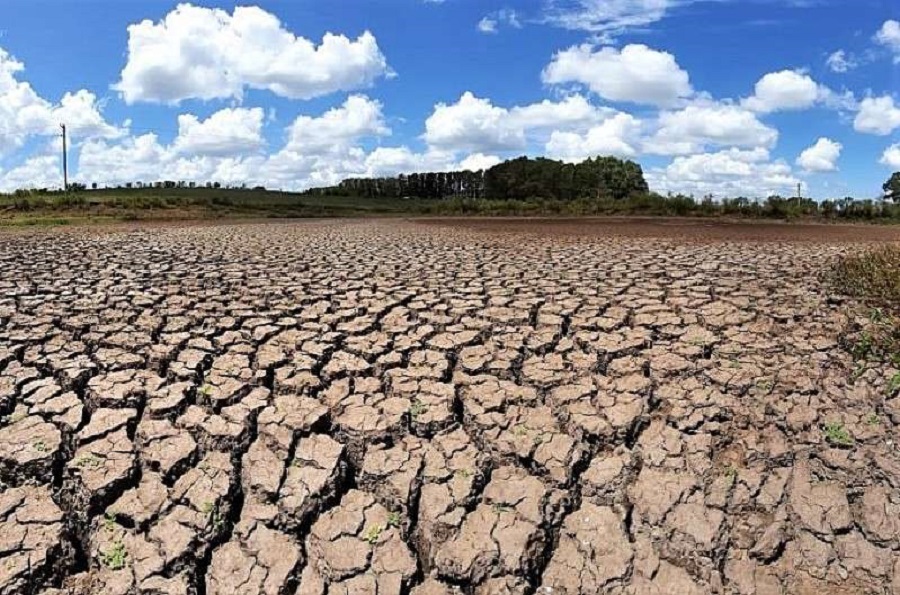RIO DE JANEIRO, BRAZIL – This year’s record drought has led at least 53 cities in 5 states to ration their water supply, has impacted navigation and contributed to the imbalance of ecosystems in the South, Southeast and Midwest regions of Brazil.
The basins of the Grande, Paraná, Paranapanema and Paraguay Rivers – which flow through the states of São Paulo, Paraná, Minas Gerais, Mato Grosso and Mato Grosso do Sul – are under the influence of a severe drought. According to the Electricity Sector Monitoring Committee, Brazil’s reservoirs water inflow was the lowest in 91 years during the rainy season from September 2020 through March this year.

In addition to the Paraná capital Curitiba, another 28 cities in the metropolitan region are on a 36-hour water supply rotation. Keeping some services running such as dish washing and cooking has become a challenge for Gustavo Paz, 42, owner of a bar in Fazenda Grande Rio, 26 kilometers from Curitiba.
“I ration as much as I can, as my house is a two-story structure and the bar takes up the bottom floor. I have a thousand liters of water in the tanks, but sometimes it isn’t enough because of the way they have been distributed throughout the property,” he says.
“I try to balance the washing of dishes, cutlery, mainly on days when there’s water supply,” Paz says, who has replaced glass for plastic because of the difficulty in washing.
The Paraná Sanitation Company (SANEPAR) said that the measure was needed to prevent a collapse in the supply system. In addition to the historical low rainfall, meteorological projections point to an extension of the drought.
In July it rained 14.6 mm in the region, compared to the historical average of 92.4 mm in the month. Inland cities such as Santo Antônio do Sudoeste and Pranchinha are also rationing.
Since early July, the 170,000 residents of Itu (São Paulo) have been supplied with water on alternate days. Reservoirs are operating at 32% capacity. The Itu Sanitation Company said it is experiencing the worst drought in the past 9 decades.
Mechanic Alexandre Rodrigues, 46, his wife Pâmela, and their 2 and 7 year old children are used to the shortage of water in the tap, despite living 500 meters away from one of the reservoirs supplying Itu.
“We manage as best we can, controlling shower time, waiting for the laundry to pile up, and when it is washed, we use the water in the machine to clean the house,” she says, who has lived there for over 7 years. Supply crises are frequent. “It has become a normal thing.”
A rationing plan has also been in place since July 7 in Salto, in the same region. Residents are supplied with water 12 hours a day. In Bauru, 90,000 people supplied by the Batalha River are also affected by rationing. In Rio Preto, 100,000 people are deprived of water from 1 to 8 PM.
The municipal reservoir, which used to supply 450 liters per second, is down to 300 liters now. Anyone found wasting water repeatedly will be fined R$2,200 (US$420). One of Santa Fé do Sul’s reservoirs has dried up and the other is operating at half capacity.
The shortage of rainfall has compromised supply in cities of the southern Mato Grosso Pantanal, such as Coxim and Corumbá. The city governments are using mobile pumps to collect water because of the distance between the banks.
The Sanitation Company of Mato Grosso do Sul (SANESUL) reported that there is a risk of intermittency in some supply systems operated by the company, as occurred in 2020. It also reported having contracted the drilling of 13 boreholes in locations likely to run out of water. Várzea Grande, Cuiabá’s neighbor, opened a bid procedure to hire 40 tanker trucks.
Threat
Greater Belo Horizonte is also in danger of running out of water. The Rio das Velhas, responsible for supplying 60% of the region, went into a state of alert on August 3, according to the Hydrographic Basin Committee.
The Minas Gerais Sanitation Company (COPASA) reported having reduced the river catchment by 500 liters per second and this volume is being offset by other sources. For the time being, the company rules out rationing, but urges the population to save. Inland, cities like Campanha and São Gonçalo do Sapucaí are rationing.
Until October
In the Southeast and Midwest, the last rainy season was shorter, aggravating the drought expected to persist at least until the end of October. “Once it rains, basins will take 2 to 3 months to normalize river levels,” says Ibrahim Fantin da Cruz, a specialist at the Federal University of Mato Grosso.
After a long drought the soil needs to be soaked and exhausted water tables need to be replenished, he says. “When we think about climate change, we know the importance of the Amazon to carry humidity to the Southeast and Midwest. But preserving local native vegetation, close to the springs that are important for water infiltration and for feeding the rivers is also necessary,” he points out.

